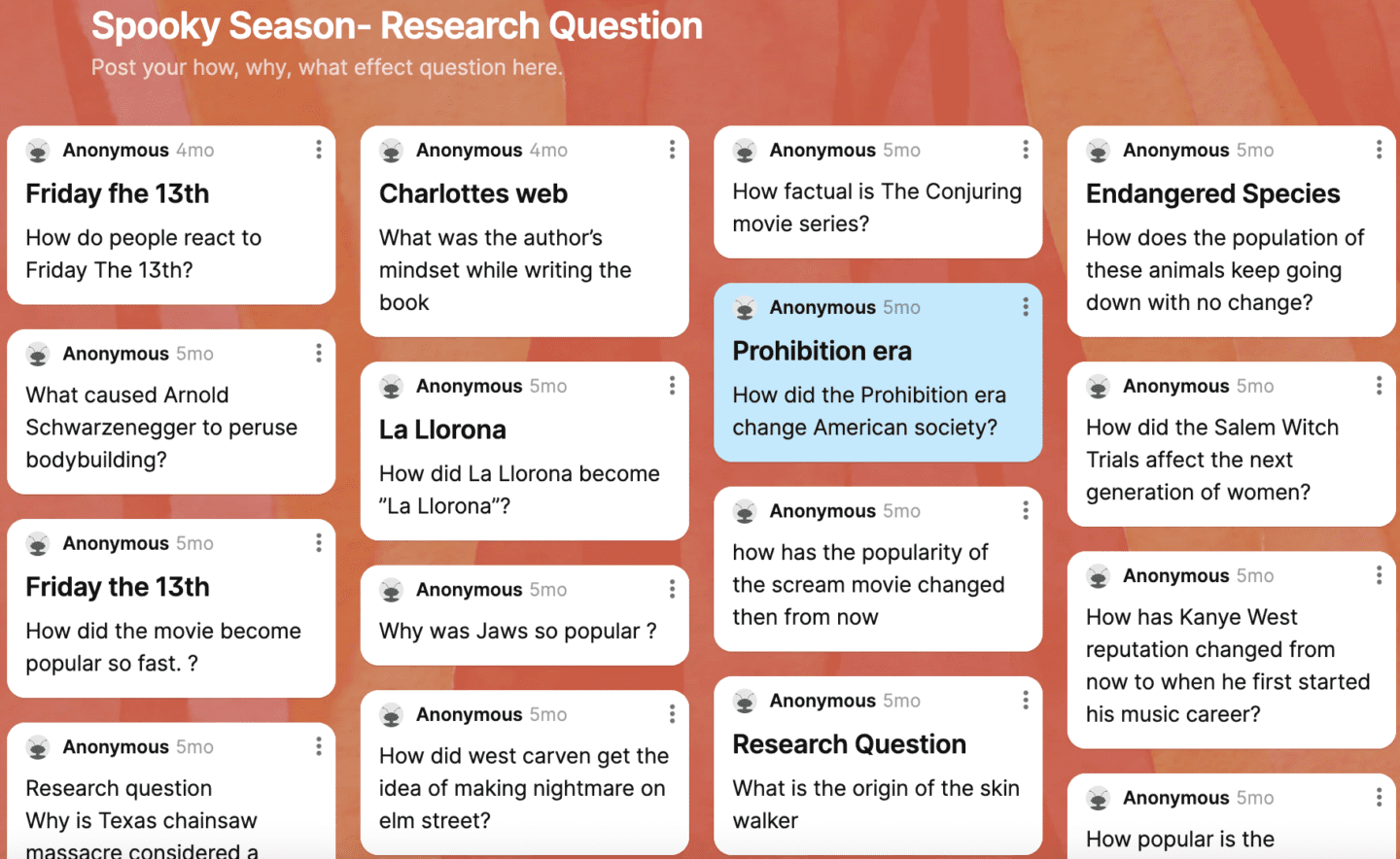Using Inquiry and Reflection

How to Teach Research Skills to High School Students
Teaching a comprehensive research experiences can be daunting and overwhelming! Many dread teaching a research project or paper but, weirdly, one of my favorite things to teach. I have taught many projects over my years but the inquiry-based project has always been my favorite! I love seeing what topics excite students! Plus, research skills are rigorous and develop critical thinking skills. As they develop there is growing-pains! As students tell me, “You do too much Ms.” Haha! Yes, I do! But having a topic they are excited about makes (slightly) less whining.
The focus of teaching research to high school students is to create independent learners and critical thinkers. I often take bits and pieces of the whole project. I might have my class write reflections on our class readings or create research questions based on articles and even novels.
Below are my steps for how to teach research and writing skills to high school students. Find all my resources in this Inquiry-Based research project on TPT.

Here are my steps and strategies to help you teach a successful inquiry-based research project:
First introduce the concept:
Begin by explaining the purpose and benefits of an inquiry-based research project. Emphasize the importance of curiosity, asking meaningful questions, and seeking evidence-based answers.
Then select a relevant topic: Help students choose a topic that aligns with their interests and the curriculum. Encourage them to select a broad topic and refine it through the process of inquiry. I model a brainstorming process. I often end up creating my own project as I take students through the process!
Formulate research questions:
Teach students how to develop research questions that are specific, clear, and open-ended. Guide them in brainstorming questions that will guide their research and exploration.

Teaching research skills to high school students
Teach research skills: Provide instruction on effective research techniques and tools. Teach students how to use search engines, databases, libraries, and credible sources to gather information. Emphasize the importance of evaluating sources for reliability and accuracy. I started this process when it was mainly paper-based! My project now are a blend of paper templates and digital organization using (mainly) Google products.
Develop a research plan using outlines and graphic organizers: Assist students in creating a research plan that outlines the steps they will take to investigate their questions. Teach them how to break down their research into manageable tasks and set realistic timelines. Writing templates are my savior! It helps them break it into manageable parts and write in sections. Students don’t always have students write a formal paper- often I use the template and then they create a brochure or “marketing material” for their topic and share using a gallery walk.

Encourage reflection and analysis
Guide students in reflecting on their findings and analyzing the data they have collected. Teach them how to draw conclusions, identify patterns or trends, and make connections to the broader context of their topic.
Finally present findings
Assist students in organizing and presenting their research findings in a clear and engaging manner. Teach them how to create visual aids, write reports, or deliver presentations that effectively communicate their research.
I love using Padlet or discussion boards to have students share questions. I also love gallery walks where students create a brochure or other “marketing” material based on their research. Presenting to partner or small group is effective where listening students create questions for their peer’s topics.
Reflect on the process: At the end of the project, have students reflect on their experience. Ask them to consider what they learned, what challenges they faced, and how their thinking and research skills have developed. Reflection is a key component to this project. It is built into the template and final paper.
